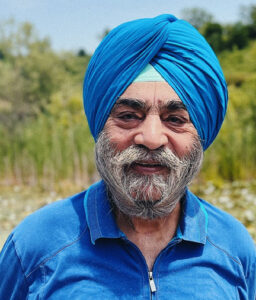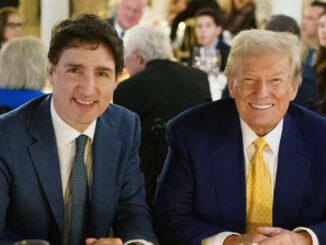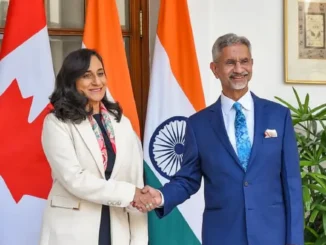Is it time for the British Empire to apologize for the worst massacre reported in recent times?
The Jallianwala Bagh massacre, also known as the Amritsar massacre, took place on 13 April 1919. A large crowd had gathered at the Jallianwala Bagh in Amritsar, Punjab, British India, during the annual Baisakhi fair to protest against the Rowlatt Act and the arrest of pro-Indian independence activists Saifuddin Kitchlew and Satyapal. In response to the public gathering, the temporary brigadier general R. E. H. Dyer surrounded the people with his Gurkha and Sikh infantry regiments of the British Indian Army. The Jallianwala Bagh could only be exited on one side, as its other three sides were enclosed by buildings. After blocking the exit with his troops, Dyer ordered them to shoot at the crowd, continuing to fire even as the protestors tried to flee. The troops kept on firing until their ammunition was low and they were ordered to stop. Estimates of those killed vary from 379 to 1,500 or more people; over 1,200 others were injured, of whom 192 sustained serious injury. Britain has never formally apologised for the massacre but expressed “deep regret” in 2019. (Wikipedia)


After Parliamentarian Bob Blackman asked the British Government to formally “apologize” for the Jallianwala Bagh massacre, former MP and Chairman of the National Minorities Commission, Mr Tarlochan Singh, has urged the first turbaned Sikh British MP, Tanmanjeet Singh Dhesi, to endorse his fellow MP’s demand.
In a letter to Mr Tanmanjeet Singh Dhesi, Mr Tarlochan Singh wants him to raise the issue in the British House of Commons to seek an “official apology” for one of the worst “massacres of innocents” in the last century.
Demanding the apology on the lines the Canadian Prime Minister Justin Trudeau tendered in the House of Commons for the Komagata Maru episode, Mr Tarlochan Singh said that “the gravity of the Jallianwala Bagh massacre was much more serious as innocents were greeted with cannon when they assembled for a peaceful congregation to demand independence.”
Justin Trudeau had tendered an unconditional apology for the Komagata Maru incident on May 18, 2016, in which hundreds of Sikhs, Muslim and Hindu passengers were denied entry to Canada and forced to return to an uncertain and ultimately violent fate in India.
The Then-Opposition Leader, Rona Ambrose, NDP Leader Tom Mulcair, BQ Leader Rheal Fortin, and Green Party Leader Elizabeth May also rose to add their voices and endorse the apology.
“Canada does not bear alone the responsibility for every tragic mistake that occurred with the Komagata Maru and its passengers, but Canada’s government was without question responsible for the laws that prevented these passengers from immigrating peacefully and securely. For that, and for every regrettable consequence that followed, we are sorry,” Trudeau said in his statement.
Though demand for a similar apology has been raised from time to time, including during the visit of the British Monarch and Prime Ministers to India, it has not progressed beyond “regrets” expressed by the British top elite.
As the worst massacre approaches its 106th anniversary, the demand has surfaced again, this time a British MP, Bob Blackman, raising it.
It is time to analyze the issue in perspective. It was not only the worst massacre in recent memory of mankind, but it also infringed upon various sensitive issues, including human rights and freedom of expression.
Let us have a look at the broader issues and sequence of events that led to this darkest phase of the Indian freedom struggle.
Issues
- Did it give birth to the concept of state terrorism
- Was it the handiwork of General Dwyer alone
- Has the country done justice to martyrs and their families
- Is it time to look beyond rituals
- Bagh’s epoch and media
- Punjab’s tryst with Censorship
- Should the British Government apologize for the Jallianwala Bagh massacre?
In a liberal democracy, the media have a vital role to play. Though acknowledged as the fourth Estate, freedom of the Press has become a mere bogey as it was during the Jallianwala Bagh epoch.
Not many would know that it was the Jallianwala Bagh epoch that saw the British using the draconian law to curb the freedom of the Press. They resorted to Censorship, not once, but twice, to gag the media. Still not satisfied, the then Editor of The Tribune, Mr Kalinath Ray, was taken into custody for opposing the Empire.
A section of media, including The Tribune, served its readers as a fearless voice of the people of Punjab. When one looks back at the Jallianwala Bagh massacre, one cannot overlook the role the media played.
Gruesome massacre
The Jallianwala Bagh massacre was a gruesome episode that changed the narrative of the freedom struggle. It not only symbolized the brute power that the British used to contain the growing demand of the populace for freedom, liberty and equality, but also exposed the desperation of the rulers in suppressing the growing revolt. This epochal event not only gave a new direction to the war for independence but also changed the course of sub-continental history. It paved the way for Mohan Dass Karam Chand Gandhi to become Mahatma.
Before the Vaisakhi 1919 massacre, Jallianwala Bagh was a dumping ground of no political significance. But things witnessed a massive change afterwards. It provided the much-needed launch pad that guided the destiny of the nation. Interestingly, many in the crowd had come to Amritsar to join Vaisakhi celebrations at the Golden Temple, and some others were there for the annual cattle fair. To kill time, they headed for Jallianwala Bagh without realizing what was in store for them. That day no leader in the Bagh could control or keep the gathering together.
Historian VN Dutta believed that the alleged culprit was Hans Raj, chief organizer of the rally. It was he who prevented people from dispersing. Rather, he asked everyone to sit down as the Government would not resort to feared fire.
“After a while, he waved his handkerchief, signaling to Dwyer and his Indian soldiers to open fire. Hans Raj had already left. He was an agent provocateur. He was later moved away to Mesopotamia, and his house in Amritsar was burnt,” V.N. Dutta had said in an interview. General Dwyer refused to believe that the crowd that had assembled at Jallianwala Bagh was innocent but hostile and had come prepared to defy authority.

Has the nation given Jallianwala Bagh and its martyrs their due? The Bagh may have been renovated and given a facelift in recent years. But does that mitigate the anguish of the people who lost their near and dear ones or the countrymen who wanted freedom from the British empire? The British Government is still not ready to apologize for its action 106 years ago. It should have taken a lesson from the Canadian government that offered an unconditional apology for its comparatively lesser grave action in the Komagata Maru episode.
Six years ago, rituals were gone through meticulously as the events unfolded for observing the centenary of the epochal event. The country’s Vice-President came, laid a wreath, joined a ceremonial salute to the unknown martyrs, released a coin and a set of postage stamps to mark the historic event. Unfortunately, after 106 years, no one knows how many freedom seekers laid down their lives in a most controversial, barbaric action that in the present day would have put to shame the infamous 9/11 terrorist attack on the twin towers in New York.
At that time, there were no human rights activists, and not many would know what terrorism, including state terrorism, was all about.
Even after more than a century, the majority belief that the Jallianwala Bagh massacre was the result of a conspiracy that has not been satisfactorily countered. Was it a unilateral action on the part of then Lieutenant Governor Sir Michael O. Dwyer? Or was it the culmination of incidents, including the widespread violence following the arrest of some Punjab leaders, including Dr Saifuddin Kitchlew and Dr Satya Pal, besides the murder of five Europeans and the assault of missionary Miss Sherwood? Or was it because of the infamous Rowlett Bills?
Whatever be the background or provocation, it was one of the single largest instances of brutal misuse of state power against innocent, unarmed, and peaceful protestors. Was the punishment given to the victims proportionate to the violation of law committed by them, wittingly or unwittingly? Not many references were made in those days about terrorism, what to talk of State terrorism. Now, when the world has redefined terrorism and state terrorism, social scientists in general and those studying armed conflicts will have little or no hesitation to identify the Jallianwala Bagh massacre as probably the beginning of State terrorism of suppressing or silencing the voice of dissent with brute firepower. It was the worst or blatant violation of human rights.
While the demand for apology from the British for this unprecedented massacre has been growing louder year after year, many still see it as a major aberration or act of rashness on the part of General O’Dwyer. He believed that by killing innocent people in Jallianwala Bagh, he was sending a message to Punjab and the world that he would manage to put a finger in the dyke. Provoked by the Punjab rebellion, especially after incidents of April 10, 11 and 12, O Dwyer became furious and aggressive. With 25 Gurkhas and an equal number of Baluchis, he reached Jallianwala Bagh on the fateful day. The troops fired about 1650 bullets.
The number of people killed in the firing and those who jumped into the well could not be authenticated even after 106 years. Even today, no one has an authentic number of those who attained martyrdom that day. Many injured died due to a lack of medical attention.
The figures of 359 or 379 killed in firing were not working figures. Local newspapers, however, put the figure of those killed at over 1,000. Historian VN Dutta held that as many as 700 were killed in the firing. Besides, several thousand were injured who received treatment at non-official clinics or health centers. All O’Dwyer wanted was to send a strong message that Amritsar in Punjab could become a storm center of rebellion against the British Empire, and the evil had to be nipped in the bud.
Realizing that Vaisakhi was a big event and there could be massive turnouts for protests against Rowlett Bills, the British ordered prohibitory orders on April 12 and 13 that banned public rallies, taking out of processions or gathering of groups of people at a place. Without any warning to the crowd, he ordered fire. Havoc ensued. The gathering, terrorized by the firing, broke up. People ran for shelter, and the narrow passageways were all crammed. Some jumped into the well for safety. Those who tried to climb the walls were caught.
Killing armless innocent people in cold blood in Jallianwala Bagh probably gave birth to ruthless State Terrorism. For Punjab, it was nothing new except that the magnitude this time was enormous.
The Jallianwala Bagh massacre was also a litmus test for the media, which at that time was in its infancy and limited to a few newspapers. One of the newspapers that the British tried to dismiss as a small local newspaper was The Tribune.
Media coverage of the events became a subject of considerable comment and criticism. The State used law not only to prevent publication of what was called “: objectionable material”, but the publishers of several newspapers, including those who were opposed to the British Empire, were accused of “secessionist propaganda”. But it did not deter upright media. Punjab was the center point of growing turbulence. Intriguingly, the laws the British framed to curb freedom struggle have subsequently been used by Independent India. Not many would forget the days after the then Prime Minister Indira Gandhi tried to curb freedom of the Press during the draconian emergency days. Subsequently, Punjab, too, suffered its repeated doses of censorship both during and after Operation Bluestar.
In a liberal democracy, the media have a vital role to play. Though acknowledged as the fourth Estate, freedom of the Press has become a mere bogey as it was during the Jallianwala Bagh epoch. The concept of the notorious “Gaudi Media” has of late come to stay. The coverage of the farmers’ agitation in recent years has been an example. And the latest is the case of the stand-up comedian Kunal Kamra. Not many would know that it was the Jallianwala Bagh epoch that saw the beginning of censorship.
The British used the draconian law to curb the freedom of the Press. They resorted to Censorship, not once, but twice, to gag the media. Still not satisfied, the then Editor of The Tribune, Mr Kalinath Ray, was taken in custody for opposing the Empire.
In 1919, a section of media, including The Tribune, served its readers as a fearless voice of the people of Punjab. When one looks back at the Jallianwala Bagh massacre, one cannot overlook the role the media played.
It was repeated during the 1977 emergency when again Editor of The Tribune, Madhavan Nair, and senior journalists like Shyam Khosla and Makhan Lal Kak had to face the wrath of the black laws, including detention under the draconian National Security Act and Maintenance of Internal Security Act (MISA). In 1984 again, these draconian laws were frequently used by the State to gag Indian media in general and that of Punjab and Chandigarh in particular.
( Prabhjot Singh is a veteran journalist with five decades of experience covering a wide spectrum of subjects and stories. He has covered Punjab and Sikh affairs for more than four decades, besides covering 10 Olympics and several major sporting events and hosting TV shows. For more in-depth analysis, please visit probingeye.com or follow him on Twitter.com/probingeye)





Be the first to comment